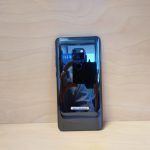Huawei is continuing to stamp its mark on the consumer electronics market worldwide, and Australia is an important market in that drive. Last year, I tried my first Huawei device with the Mate 10, and this year I have returned for a follow up with the Mate 20.
We’ve already reviewed the Mate 20 Pro. The Mate 20 and Mate 20 Pro share many features and components, including the amazing Kirin 980 SOC, storage configuration and 3 cameras (with a few minor differences). That said, we thought we’d provide a closer look at the Mate 20 to see what’s different.
Huawei has stepped up the quality of the Mate 20 from the Mate 10 and has also bumped up the price with the standard Mate 20 coming in at a MSRP of $1,099 AUD. What are you getting in the Huawei Mate 20?
WHAT’S INSIDE?
The Mate 20 is powered by Huawei’s own top of class Kirin 980 SOC. The 980 is the first 7nm commercial SOC with an 8-Core big.middle.little design providing maximum performance options with excellent battery savings.
The core configuration includes 2 A76 cores clocked for high performance, 2 A76 cores clocked for medium performance, and 4 A55 cores clocked for low-level performance. This is supported by 6GB of RAM, 128 GB of internal storage and optional storage expansion.
Rounding out the hardware package is a 4,000 mAh battery, dual Leica rear cameras, a 6.53-inch 18.7:9 FHD LCD display, rear fingerprint sensor, a headphone jack (big tick), USB-C with fast charging and all of the standard connectivity you would expect from a 2018 flagship phone, all packed into a sleek and elegant package.
| Key Specifications: | Huawei Mate 20 |
|---|---|
| Release date | November 2018 |
| Screen size | 6.53-inch |
| Screen technology | TFT LCD (IPS) |
| Resolution | 2,244 x 1,080 |
| PPI | 381 |
| Rear camera |
|
| Rear aperture |
|
| Front camera | 24MP |
| Front aperture | f/2.0 |
| Chipset | Kirin 980 |
| Core config |
|
| RAM | 6GB |
| Storage | 128GB |
| MicroSD | No - NM Cards (Proprietary) |
| Battery | 4,000 mAh |
| Battery removable | — |
| Connector | USB-C |
| Headphone Port | — |
| Headphone Location | Via USB-C Adaptor |
| Speaker Configuration | Bottom |
| WIFI standards | 802.11 a/b/g/n/ac |
| Bluetooth standards |
|
| NFC | Yes |
| Location |
|
| Android OS | Android 9.0 |
| Vendor skin | EMUI 9.0 |
| Dimensions | 158.2 x 77.2 x 8.3 mm |
| Weight | 188g |
| Colours |
|
For those wondering what the big differences are between the Mate 20 and the Mate 20 Pro, here’s a quick list of the major differences as we see them.
LCD Vs OLED, Rear fingerprint sensor vs in screen, 2x optical zoom Vs 9 x optical zoom Headphone Jack vs none, 6.39” Vs 6.53”, FHD vS QHD
So what’s it missing? Honestly nothing, except maybe Qi charging which features in the Pro model only. I couldn’t out-Android this hardware; everything I wanted it to do it just did, easily.
WHAT’S IT GOOD AT?
Everything. Between the beautiful design, solid design and the amazing Kirin 980 I can’t image a better-performing Android device. Could it do some things differently? Of course, would I have changed a thing of two? Of course, there’s no such thing as the ‘perfect phone’, but everything it does do it does exceptionally well.
The now familiar Huawei design language is front and center on the Mate 20 with the all-glass design, seamless finish and overall hand feel has produced a truly gorgeous device. It is, however, a little bit of a fingerprint magnet, lucky Huawei as always included a case in the box, and that’s always appreciated.
The 4,000 mAh battery combined with the 7nm big.medium.little Kirin 980 makes the Mate 20 one of the best lasting devices I’ve ever used. I can use it all day for work, play games of an evening, rack up hours of screen on time and be nowhere near battery anxiety levels when I go to bed, I could not flatten the Mate 20 with normal use.
It’s interesting that Huawei opted for a FHD LCD panel for the Mate 20 over a 2K OLED like the Mate 10. That said the screen was bright, responsive and vibrant. The overall colours were gorgeous when taking photos. As always Huawei gives you great controls over turning the display if that’s your thing.
I’d be remiss if I didn’t mention one strange choice, when you jump into the multitasking menu the phone shifts to a blue hue. This is clearly a UI choice and was initially a little jarring. I’m used to it now but it’s worthy of just knowing.
The Cameras
Huawei has long been known for their great cameras and photography, and now with the AI powers of the 980 paired with the object recognition offered by the dedicated neural processing unit Huawei are taking the Mate 20 line to the next level. This year Huawei have included not 2 but 3 rear camera sensors alongside their brand of computational photography.
The 3 cameras include a 16MP f/2.2 Ultra Wide Angle, 12MP f/1.8 Wide angle and a 8MP f/.2.4 2x Telephoto lens all supported by OIS and a dual-tone flash. Around the front Huawei has packed in a massive 24MP f/2.4 sensor for brilliant selfies.
In the era of computational photography, the sensors are only half the story. I found myself often using the 3 sensors more than I ever had before on multi-lens devices, because honestly, they all provided their own unique and useful experience. I’m not a fan of digital zoom, I can just crop later, but optical zoom, that’s game-changing.
In 2018 a ‘flagship’ smartphone camera has to load instantly, shoot images with high reliability and capture moving objects. Unsurprisingly the Mate 20 does all of that and more, the Mate 20 just captures shot after shot with a consistent, quick and reliable result, it quickly became my default camera.
Using the onboard AI not only do you get the added bonus of HDR and computational photography, but Huawei has continued to develop their AI photo modes where the camera detects what you’re taking a photo of and adjusts the settings to get you the best image. This is more than a gimmick and I found myself almost never turning it off, which is a contrast to the same feature on the Mate 10.
As always what makes a good camera is a very subjective thing. I found that the Mate 20 took a reliably great photo quickly every time I pulled the phone out of my pocket. IF it’s missing anything I’d say it’s the extra optical zoom of the Mate 20 Pro, but I think that was the plan!
Here is an aexample of the X 0.6, X 1.0 and X 2.0 optical lens effects.
Performance
Huawei has a message for Qualcomm: we’re here and we’re better. The Kirin 980 is fast, power efficient instantly responsive and mainly runs cool. Can you honestly say you’ve ever experienced that from a Snapdragon chip?
Now we all know the benefits of end to end development where the SOC is developed hand in had and tuned for hardware, and perhaps that’s why the SOC in the Mate 20 just seems so powerful, as opposed to a more “off the shelf” parts? I just don’t know, but I feel I can feel the difference here.
I’ve got the 6GB of RAM version of the Mate 20, so the performance isn’t lacking, I’m not sure what difference you’d experience in a 4GB variant. Storage space is abundant with 128 GB and a NM storage expansion slot, which is, unfortunately, a proprietary standard, and as usually Dual SIM is standard with the Mate line. I’d still prefer granular controls of which contact and app used which SIM for calls and data but at the same time, I doubt I’d take the time to set it up.
I simply can’t fault the performance of the Mate 20 in any arena.
WHAT’S IT LESS GOOD AT?
It’s time for my standard disclaimer, I prefer stock or stock-ish software. As such I’m always going to find any adjustment to the look and feel of Android a little disorientating. That said there’s one feature that actually makes it less of an issue… setting search, more on that later.
The pre-production hardware I’ve been using has been running EMUI 9.0 built on Android Pie and as at writing had the October 2018 security update installed. Hopefully, the retail version will get it’s monthly security updates and OS updates for years to come.
If like me you prefer a different look to our devices Huawei’s theming engine is a fantastic way to instantly turn the UI 90% into stock. A Pixel theme combined with Nova launcher makes the device look and feel almost stock, and with search function in Settings now letting you instantly find anything you want I never have to go hunting for a setting. Honestly, I do this on stock devices as well now.
(editors note: be careful with the theme you use as it can adversely affect the normal operation of the phone)
As much as theming and Nova can deliver a similar feel it’s little things like the battery manager that can’t be disabled and other ‘helpful’ pop ups and notifications that makes me miss stock software. Other Huawei differences such as changing how lock screen notification work, the lack of the clock as an option on the screensaver and accessibility settings changing settings for password managers just stick out as software issues I wish didn’t exist and do, for me, detract from the overall package of Huawei’s exceptional hardware. I’d love to see an Android One device from Huawei with their camera app, that would be amazing….
Not everything about Huawei’s software is a detractor, things like the theming engine give you even more customizability of the device. The software also gives you more control over other areas of the device as well. For some people, EMUI is something they prefer.
CONCLUSION
I’ve loved revisiting the Mate line one year on, firstly it shows me that Huawei is consistent with their hardware, the excellent performance and finish of the Mate 10 wasn’t a one-off that’s just how Huawei makes devices.
Would I recommend you buy a Mate 20? Yes, yes I would. If what you’ve seen and read about this phone makes you think hmmm, this could be a good phone for me I’m here to assume you it could be. If for whatever reason you’re not wanting to get a Mate 20 then you already know that.
But with excellent design, fantastic hardware and performance there’s very little missing from the Mate 20. Sure the Mate 20 Pro exists and has slightly improved cameras, QI charging, OLED QHD display and if they’re on your must-have list take a gander at the Mate 20 Pro, but otherwise the Mate 20 is worthy of serious consideration.
The Mate 20 is selling for $1099 AUD from various retail outlets or on contract from Vodafone Australia.


















“I’m here to assume you it could be” – did you mean “assure”
Nice job on the review Duncan. It looks and sounds like a fantastic overall package. The question is, could you use it as your daily driver over say a Pixel 3 or Nokia phone with Android One?
At least this one doesn’t have a screen that turns green..
Did i read it wrong or does it say in the differences section the pro model has 9 X optical zoom ? I was under the impression it was 3 times ois ? Nice looking phone the base model , i would almost pick the base mate 20 over the pro for its wider display . The pro model is narrower than my galaxy S8+ which makes typing for big handed buggers a chore . And while still like my galaxy , i would rather not get another device with the trendy tall slim aspect . Bit of a shame… Read more »
I’m not sure the camera’s are “knobbled”, but would I want the best, of course…. but I always want the best.
Oneplus 6t beats it. With GCam port it takes better night shot then this mate 20. Cheaper too.
Doesn’t support all AU mobile frequencies though, does it?
Dimmer screen, non existing warranty, and slower chipset
Warranty pretty much non existent with Huawei. Just look at how they treat Aussies with green screens on mate 20 pro
You mean by replacing the device with non-affected stock?
Seems like warranty to me – coming from someone with an affected device that has had quite a smooth replacement process via Optus.
They may have taken a minute to come to the party but you are definitely being unfair with that assesment.
I’ve had one warranty claim and one replacement screen direct with Huawei and I have to say they were amazingly cooperative and responsive.
And no headphone jack on the t .
The Mate 20 has the headphone jack on the top, which is a huge plus for me over other devices.
The Kirin 980 in the Mate 20 line is blisteringly good